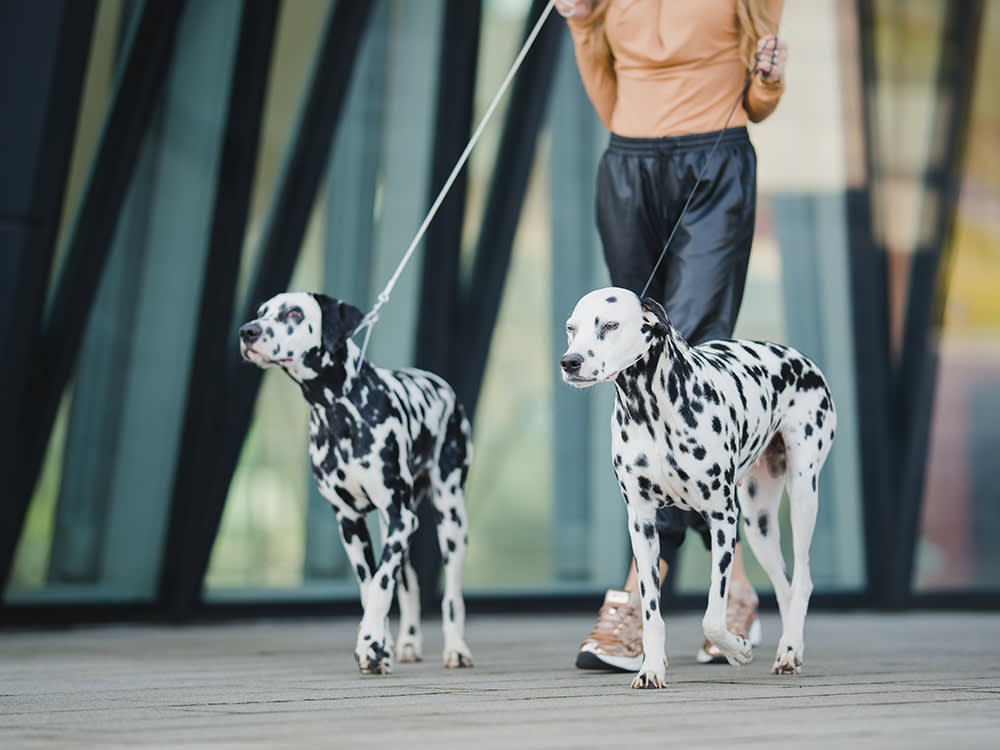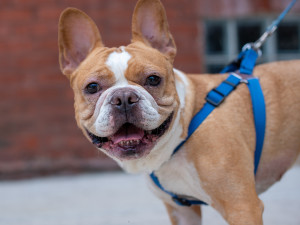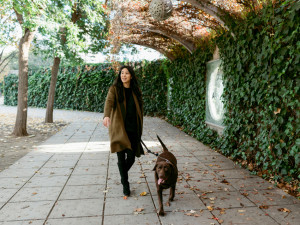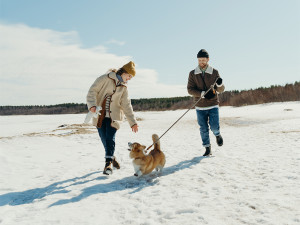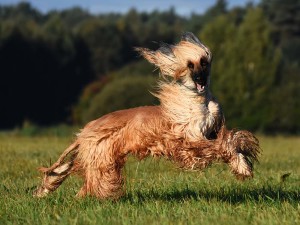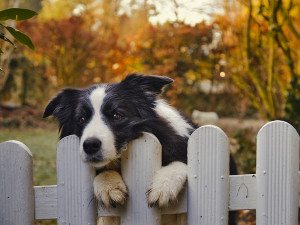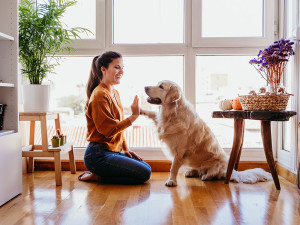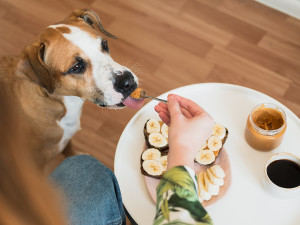Who’s Walking Who?
Dog trainer Karen B. London promises you’re not doomed to be pulled down the street forever
Lead pulling. It’s one of those things that – along with heavy downpours and errant squirrels – can make your dog walk less than enjoyable. Your despair is shared by lots of people who want to walk their dogs but find the experience more akin to water skiing on a pavement. You’re not doomed to be pulled down the street forever, though: you can enjoy walking your dog, and we’re here to tell you how.
How to stop a dog from pulling on the lead
Teaching your dog to walk calmly on a lead without pulling will require a lot of patience and practice, but it can be done.
1. Invest in power steering
Changing the equipment you use to walk your dog can make a huge difference in your experience right away. The right kind of harness puts physics on your side so your dog can’t lean in with their full body weight to drag you along. The Freedom No-Pull Harness by 2 Hounds Designopens in new tab is a great option. Some find bungee leads helpful because the lead has a bit of give, but for strong, relentless pullers, I prefer a plain six-foot nylon, rope or leather lead.
2. Use your movement to your advantage
If dogs are allowed to keep going forward, they learn that pulling is the way to get what they want, and they will keep doing it. Don’t ever allow your pulling dog to continue on their merry way. If your dog pulls, there are two options:
Stop immediately and don’t move until your pup lets up and there is slack in the lead. You may have to stop again three seconds later and do the same thing and that’s OK. Just be consistent about refusing to let them pull.
When they pull, turn and head in the other direction. That puts them behind you, at least momentarily, and your pup will not be pulling.
Both of these training methods require a bit of patience, but hang in there – it’s worth the wait. Whether the dog is pulling or not, be unpredictable and reinforce the preferred behaviour. Making quick turns, reversing direction, speeding up and slowing down all make you more interesting, which means it’s more likely that your dog will follow you, going where you’re going rather than pulling you where they want to go. True, some of your neighbours will find it amusing, but consider it just another good thing you’re doing for the community!
3. Exercise your dog before you walk
I know, I know, you’re probably thinking: “Isn’t the point of the walk to give my pup exercise?” Yes and no. Exercise is only one of the benefits of a dog walk. Dogs on walks also get to be in a new environment that can be more stimulating than being home. They are able to sniff and see other people and dogs. For now, the goal of the walk is to teach them to walk nicely so they can go on future walks rather than to meet all their exercise needs. If your pup is tired when you start out, they’re less likely to pull. That helps them develop good habits and also allows you to reinforce their good behaviour so it becomes more likely in the future. Playing fetch in the garden, or even going up and down the stairs multiple times can take the edge off their energy.
4. Train your dog to have good lead manners
While some dogs naturally walk calmly and politely all their lives with no specific instruction, that’s certainly not the norm. Most dogs need to learn how to do it. Bring top-quality treats on every walk and give them to your pup whenever they’re doing the right thing: walking without pulling you. The treats need to be really delicious – that usually means soft and smelly – to make an impact. Dry biscuits are not going to be up to snuff for most dogs.
5. Set your dog up for success
Make it as easy as possible for your dog to do the right thing so you can reinforce them with those delicious treats. In addition to exercising your dog ahead of time (you can tell it’s important because I’m mentioning it twice!), there are other steps you can take to set your dog up for success. Choose the time of day carefully and go when they tend to be the least excitable. Many dogs are extra jumpy and energetic mid-morning and late afternoon, but may be more manageable closer to the crack of dawn or later in the evening. Walk them on an out-and-back route rather than a circular one. Many dogs pull on the way out but are more contained on the return because they’ve already investigated the route’s sights and smells.
It will take a concerted effort and a commitment to consistency to shift your dog’s gears, but it will be worth it when you’re able to enjoy walking together.
